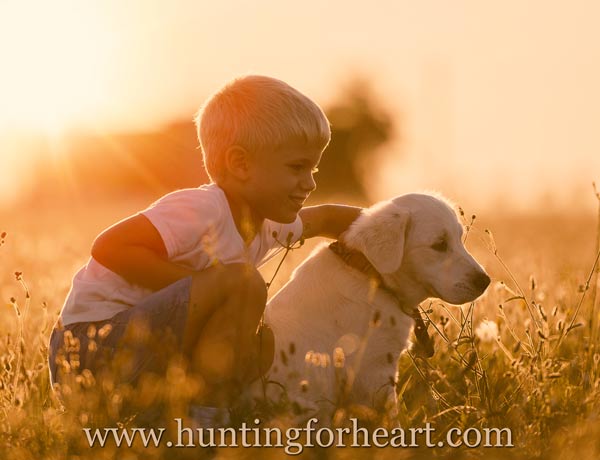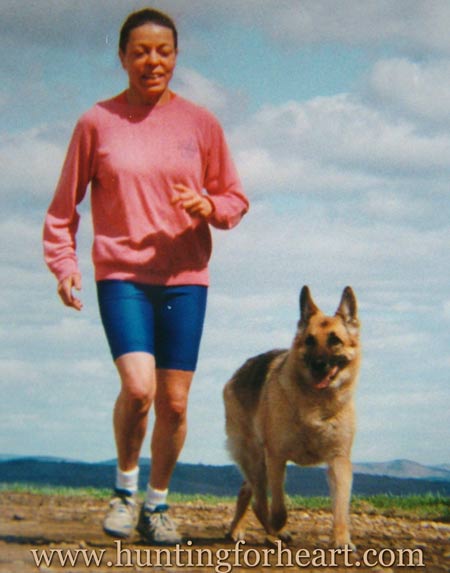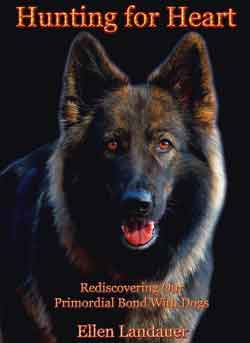Puppy Socialization Checklist
by Ellen Landauer
A Puppy Socialization Checklist should include the following: all kinds of people including total strangers, dogs, other animals, large crowds, cities, rural areas...

People: babies, toddlers, young children, older children, adults, men, women, elderly, people of any age in strange costumes - hats - coats - suits, etc.
Dogs: other puppies, young dogs, male dogs, female dogs, old dogs.
Other animals: cats, horses, livestock.
Places: Parks, woods, towns, busy shopping centers, cities.
Various situations: Local sports events, family picnics, parades, fairs, the vet's office.
The commonly accepted way to raise your new pup is to make sure you follow a puppy socialization checklist. By exposing your canine baby to a constant variety of people, places, other dogs, animals and situations, you surely will end up with a calm, safe, confident dog companion you can take anywhere.
Or will you..?
How I Followed the Puppy
Socialization Checklist
For over 25 years, I raised my canine companions, including my first German Shepherd Kiyla, according to the puppy socialization checklist above.

PHOTO ABOVE: Kiyla, 13 1/2 years old, and me jogging together.
Here, for example, is our itinerary on day one of her life with me:
Mid-morning: Pick up 8-week-old Kiyla at the breeder's. Carry her to the car and put her in wire crate in the back seat. Three minutes into her first ride in a car, she suddenly starts ki-yi-ing.
First stop - the vet's office for her first health check. Kiyla sits on the bench next to me on leash. Already bonding with me, she looks up at me in the most open and trusting way. When our turn comes, I carry her into the exam room and put her on the table. The vet gently pokes and prods, applies a stethoscope, takes a vial of blood and tells me Kiyla looks very healthy.
Next, I return home, gather up my massage table and lotion and head directly to the home of a client. I clip on a lead, let Kiyla out of the crate to eliminate, then put her back in the crate. I carry the crate into my client's house so Kiyla can be with me as I work.
Coming back home, I let my 6 year old male Doberman out and take Kiyla out of the crate to meet him. He growls a bit, is skittish and seems not to want to make contact with Kiyla. We walk around the yard a bit.
Relatives and a couple of friends come over to see the new pup. They ohh and ahh, clap their hands to get her to come to them, look directly at her and put out their hands to touch and fondle her.
Later, I put the crate on the sun porch, put Kiyla in and feed her some dinner.
From day one, I took Kiyla EVERYWHERE with me. As she grew, I went out of my way to hang out at shopping malls, took her to outdoor gatherings, parties, street festivals and more.
Within a couple of weeks of getting her, I was training her to sit, lie down, stay and come. Using the best training method I knew, I established dominance over her at a tender age and did a lot of obedience training. We also played fetch, took plenty of hikes and long runs together.
From 4 months of age, obedience classes were on the agenda. I decided to do competitive obedience with Kiyla. Her puppy socialization checklist now included classes and competitions. She met LOTS of dogs of all breeds and all manner of people.
What Were the Results of the
Puppy Socialization Checklist?
Kiyla was from unusually stable and healthy old-time American bloodlines. No fault of temperament there!
However, following the puppy socialization checklist resulted in a nervous, hyperactive dog that sometimes exhibited inappropriate fear/aggression.
Kiyla, once mature, exhibited moderate aggression problems with other dogs - not extreme, but definitely confrontational. She didn't like being in crowds but was generally good with individuals or small groups of people.
Though trained through the highest AKC level of obedience (Utility), she could be sullen and resistant to being told to do something.
Over many years, I read armloads of books by top trainers and veterinarians on training and care, both before getting Kiyla and after. I worked hard to follow the best advice, including the puppy socialization checklist.
One major thing that I noticed was that, as strong a dog as she was, Kiyla often lacked the rock-solid calm, confident composure that I have so admired in some of the best working dogs.
WHY did a dog with an excellent temperament, raised with love, care, discipline and attention - turn out to have behavior problems once grown??
The BEST Puppy Socialization Checklist
The most important part of a puppy socialization checklist is giving a young puppy a calm environment in which temperament can thrive.
Also very important as a pup enters adolescence - is to provide activities which satisfy a pup's natural drive to run, jump, chase and bite - with un-pressured games that safely channel their energy.
It is highly counter-productive to rush a baby pup into a social schedule that might fatigue a member of the British royal family.
A pup that grows up in a calm environment begets a calm, confident grown dog. A chaotic environment results in a chronically overstimulated dog.
To succeed in fostering the calm confidence, trustworthiness and cooperative nature that is manifested by an emotionally whole and healthy dog requires something of YOU.
- It requires turning nearly everything you ever learned about dog training and temperament on its head.
- It requires embracing a whole new paradigm which opens you to the deepest part of a dog - their true nature.
The reward for you and your dog is an extraordinary bond, and direct communication like you've never experienced it before.
The more powerful your dog's temperament, the more you need this change of heart.
The more you embrace it, the more capable you will be of handling even the strongest, most willful dog!
Going Beyond the Puppy Socialization
Checklist

PHOTO ABOVE: Calm, confidence and open character in young pup. Temperament develops best in the great outdoors, moving in harmony with YOU and carefully selected people invited by you...
Fear and resistance naturally comes up when we are asked to question entrenched beliefs.
In the limited scope of this article, we don't have enough time to help you step beyond convention - even if you are willing. It takes TIME to explore new ways of seeing enough to consider moving toward a different point of view!
That is one reason that I wrote 'Hunting for Heart.' It gives you plenty of time to enjoy a deep dive into the trials and challenges of my own initiation into opening to the true nature of dogs.
It will be my pleasure to share with you this journey of discovery that resulted in a bond with my dogs beyond anything I could have imagined.
It is a love story (at times a 'tough love' story) from beginning to end.
By accompanying me, you may find yourself seeing your beloved companion(s) with new eyes - and exploring a whole new vista in your life with dogs.
Puppy Socialization Info:
Two Scenarios from Pup's Point of View
BUY 'Hunting for Heart' and
Rediscover Your Primordial Bond With Dogs
BUY the
Book
HEALTH INFO
FOR YOU
My other website:
Peak health helps you have more energy to enjoy your dog!
